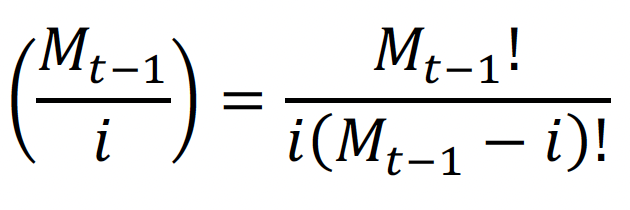Lo studio, a firma di ROGER KOPPL, Whitman School of Management, Syracuse University, Syracuse, NY, USA, ABIGAIL DEVEREAUX, George Mason University e New York University, JAMES HERRIOT, Herriot Research, e dello stesso Kauffman, intitolato “The industrial Revolution as a Combinatorial Explosion” assume:
<<A remarkably simple combinatorial model of technological change suggests that the Industrial Revolution was a combinatorial explosion in an unchanging process of technological change that began with the origin of our species, or perhaps earlier. In this model, particular causes influenced the timing and location of the Industrial Revolution, but not whether it was going to happen or not. Thus, there is an important sense in which the Industrial Revolution had no special cause>>.
E dettaglia così il rapporto tra la Cabiodiversity e la TAP:
The model
We model technological progress as increasing “cambiodiversity” (Koppl et al. 2015),that is, as increases in the variety of goods. Increasing cambiodiversity is a characteristic feature of economic growth (Mandeville 1729, Smith 1776, Menger 1871, Young 1928, Hidalgo et al. 2007, Beinhocker 2007). In any period, there is a fixed probability that any one good may be modified to produce a new value-enhancing good, and smaller but still fixed probabilities that 2, 3, or n goods may be combined to produce a new value- enhancing good. Modifications in Paleolithic hand axes (Ambrose 2001) and in 17th and 18th century American axes (Boyd, Richerson, and Lupp 2013) illustrate how an individual good may be modified to produce a new value-enhancing good.
Powered heavier than air flight illustrates how two distinct goods – gliders and internal combustion engines – may be combined to produce a new value-enhancing good, the airplane.
In our combinatorial model of technological evolution new types of goods may be generated when tinkerers modify an existing good or cobble together two or more existing goods to come up with some new twist or combination that, with all its imperfections and inelegancies, works well enough to be an improvement.
Let Mt denote the number of distinct types of goods in the economy at time t. Mt is the degree of cambiodiversity. Our assumption of fixed probabilities of combining n goods to produce a new value-enhancing good leads to the simple combinatorial model given in equation (1).
Where  ,
,![]() (In practice, we set
(In practice, we set ![]() ) Pαi is the probability that if i goods are combined they will result in a new good.
) Pαi is the probability that if i goods are combined they will result in a new good.
We may call P the “master probability of a successful combination,” although the probabilities within the model are the Pαi terms.
For simplicity, we take equation (1) to describe the net increase in cambiodiversity (![]() ) rather than separately modeling additions and subtractions to the variety of goods under production.
) rather than separately modeling additions and subtractions to the variety of goods under production.
There is a random element in the emergence of new goods, as reflected in the parameters P and αi. And it may be that many attempts to generate new goods are best viewed as random. But only value-enhancing goods will have an enduring place in the econosphere, and it only these value-enhancing goods that we are considering in Equation (1).
The fact that only value-enhancing goods will be produced may not be immediately obvious. But if the purpose of production is consumption, then people will not generally have an incentive to engage in consumption-reducing activities. They will not produce a new and innovative good unless it displaces goods of lower value.
Production of the new good will consume resources such as human labor that would otherwise have gone into producing other things including, perhaps, leisure. Thus, whenever a value-enhancing good is added to the system, the overall economic output, GDP, goes up. While errors can and will happen, of course, the tendency is always to produce only such innovative new goods as can cover their opportunity costs with at least some surplus.
